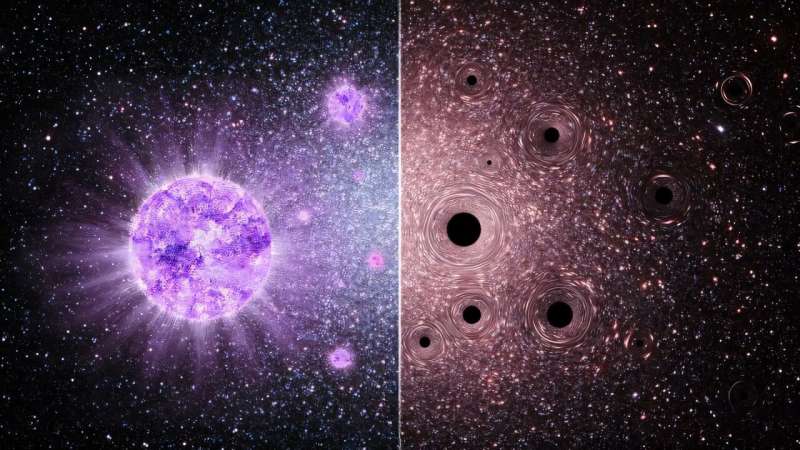
An international team of researchers has unveiled a groundbreaking model that explains how extremely massive stars (EMS) have influenced the formation and early evolution of the universe’s oldest star clusters. The study, led by Mark Gieles from the Institute of Cosmos Sciences at the University of Barcelona, was published in the Monthly Notices of the Royal Astronomical Society on November 4, 2025. This research highlights the role of EMS, which possess more than 1,000 times the mass of the sun, in shaping the chemical makeup of globular clusters, some of the oldest and most mysterious star systems known to exist.
Globular clusters, typically containing hundreds of thousands to millions of stars, can be found in nearly all galaxies, including our own Milky Way. Most of these clusters are over 10 billion years old, indicating that they formed in the aftermath of the Big Bang. The stars within these clusters exhibit unique chemical signatures, featuring unusual abundances of elements like helium, nitrogen, oxygen, sodium, magnesium, and aluminum. These peculiarities have stumped astronomers for decades, suggesting complex enrichment processes during their formation, often involving interactions with extremely hot “contaminants.”
The new research builds on an existing star formation model known as the inertial-inflow model, adapting it to the extreme conditions of the early universe. The team demonstrated that turbulent gas in the most massive clusters can naturally lead to the creation of EMS, with masses ranging from 1,000 to 10,000 solar masses. As these massive stars evolve, they expel powerful stellar winds rich in high-temperature hydrogen combustion products, which subsequently mix with surrounding pristine gas, resulting in the formation of chemically distinct stars.
“Our model shows that just a few extremely massive stars can leave a lasting chemical imprint on an entire cluster,” stated Mark Gieles. “It finally links the physics of globular cluster formation with the chemical signatures we observe today.” The study reveals that this process occurs rapidly, within a span of just 1 to 2 million years, prior to any supernova explosions. This timing ensures that the gas in the cluster remains uncontaminated by supernova activities.
The implications of these findings extend well beyond our galaxy. The researchers assert that nitrogen-rich galaxies identified by the James Webb Space Telescope are likely influenced by EMS-rich globular clusters formed during the early stages of galaxy evolution. Paolo Padoan from Dartmouth College emphasized, “Extremely massive stars may have played a key role in the formation of the first galaxies. Their luminosity and chemical production naturally explain the nitrogen-enriched proto-galaxies that we now observe in the early universe with the JWST.”
Additionally, these colossal stars are expected to end their life cycles by collapsing into intermediate-mass black holes, each exceeding 100 solar masses. These black holes could potentially be detected through gravitational wave signals, offering further insights into the early universe.
The research provides a cohesive framework that connects star formation physics, cluster evolution, and chemical enrichment. It suggests that EMS were crucial in driving early galaxy formation, simultaneously enriching globular clusters and facilitating the emergence of the first black holes.
For further details, refer to the study by Mark Gieles et al, titled “Globular cluster formation from inertial inflows: accreting extremely massive stars as the origin of abundance anomalies,” available in the Monthly Notices of the Royal Astronomical Society (2025).







